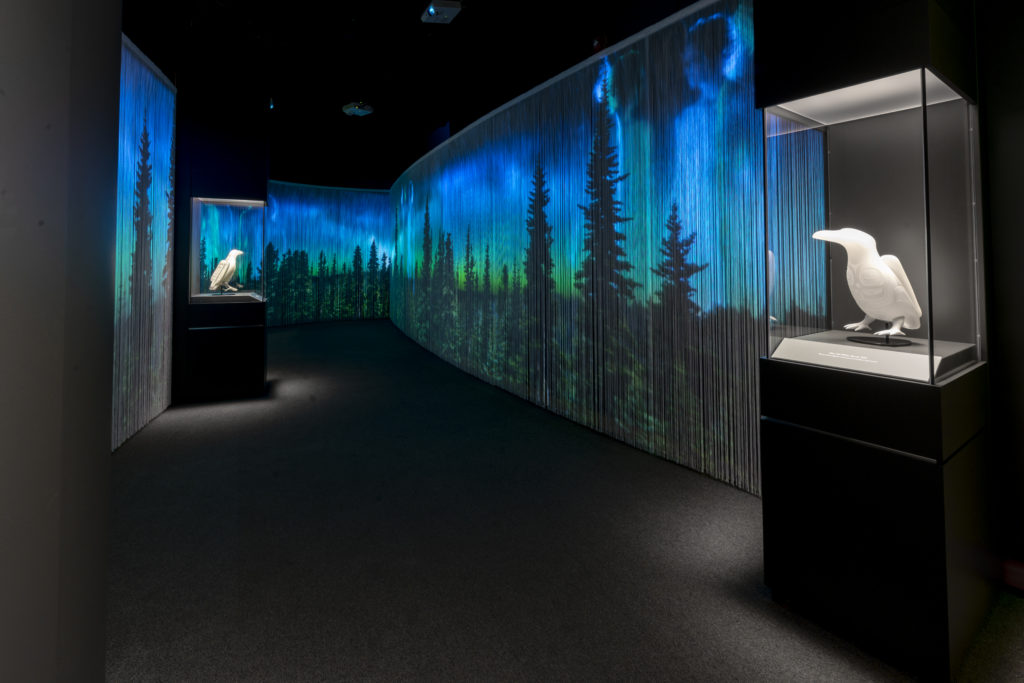
By Sheila Wickouski
Of the thousands of stories of Raven the trickster told by the indigenous people of the Pacific Northwest, international glassmaker Peston Singletary has chosen to tell one version from his Tlingit clan in the exhibition Preston Singletary: Raven and the Box of Daylight now on view at the National Museum of the American Indian.
Glass, while not a traditional media of these clans, has an infinite variety of possible uses from small fine jewelry like brooches and beads to practical housewares like glasses and dishes. It ranges from functional, letting light through windows, to a revered form of art like stained glass windows.
In the theatrical presentation Singletary has created, he explores all these possibilities with 60 glass objects and sculptures, accompanied with background recordings of storytellers speaking the language in which the legend was first told and paired with layers of original music and coastal Pacific Northwest soundscapes.
Starting in darkness and moving to the dimly lit first gallery, the story unfolds as Raven asks “Where is the daylight?” A stunning reproduction of a life-sized canoe of bronze and glass hovers over a river of blue glass with fish above catching the glitter and brilliance of glass.
The next gallery reveals how Raven is transformed into a human boy. He has been looking for a wealthy person who hoards treasures and finds the rich man’s daughter. After trying many ways, he finally, as a hemock needle in water, enters her body where he shifts from part bird to part boy as he grows in his mother’s belly.
Using old anthropological photographs, a replica of a clan house has been recreated with screens and house posts of decorative eagles and killer whales. Glass-headed cedar manikins accompany the display of treasured objects.
Once in the clan house, Raven stares in curiosity at three shimmering boxes. He opens one and sends stars scattering. He is reprimanded by his grandfather, a clan chief, but is remorseful. His grandfather forgives him and gives him a box with the moon. He plays with the moon, which repeats the lunar cycle of day and night. The mischievous boy then opens the third box and the world is drenched in sunlight.
The final gallery is bright with lights over twelve glass heads representing the different ways people responded to the surprise of daylight. Some people become water people like fish, some go into the forest like animals, some take to the sky like birds. The fourth group, humans, become a clan people, the Tlingit.
The complex story offers endless possibilities for retelling, and the exhibit presents much to discover in a delightful walk among art objects washed in sound and light, helping to inspire lingering thoughts about our own stories of creation and transformation.
Preston Singletary: Raven and the Box of Daylight has been organized by the artist and Museum of Glass in Tacoma, Washington and will be on view at the National Museum of the American Indian until February 2023.

